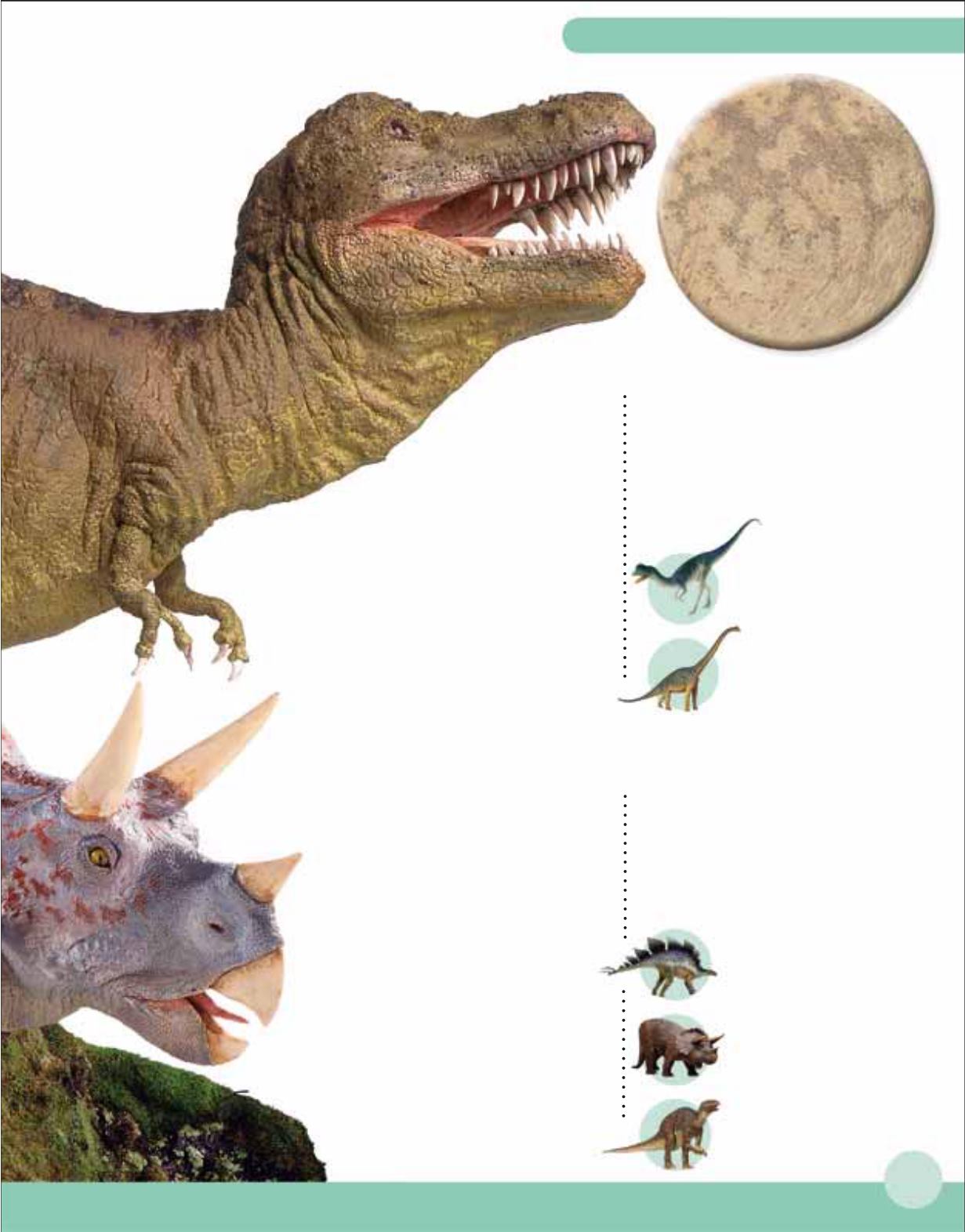
Yes. There’s evidence that
T. rex
preyed on
Triceratops
.
A hip question
187
Theropods,
the
meat-eaters, such
as
Dilophosaurus.
Sauropodomorphs
, such
as
Brachiosaurus,
with their
small heads and long necks.
I’m in this group!
Saurischians can be
divided into two
main groups:
Strangely enough,
scientists believe that birds
have evolved from lizard-
hipped dinosaurs – not
bird-hipped dinosaurs as
you might expect!
W
e
i
r
d
o
r
w
h
a
t
?
Ornithischians
These were all plant-
eaters. The swept-back
bones allowed more
room for the digestive
organs, and meant
their bellies could be
carried well back,
allowing some to walk
or run away from
danger on two legs.
Saurischians
All meat-eating
dinosaurs were lizard-
hipped, but some plant-eaters
were also lizard-hipped.
T.
rex
was lizard-hipped, but so
was the mighty plant-eating
Diplodocus,
whom you
will meet on page 50.
Thyreophorans,
the four-
footed, armour-plated
dinosaurs (e.g.
Stegosaurus
).
Marginocephalians,
who
had heads with bony frills
or horns (e.g.
Triceratops
).
Ornithopods,
the
two-legged plant-eaters
(e.g.
Iguanodon
).
I'm in that group!
Ornithischians can
be divided into three
main groups:
T. rex
Triceratops
Most lizard-hipped
dinosaurs had a pair of
hip bones that pointed
forwards or down.


